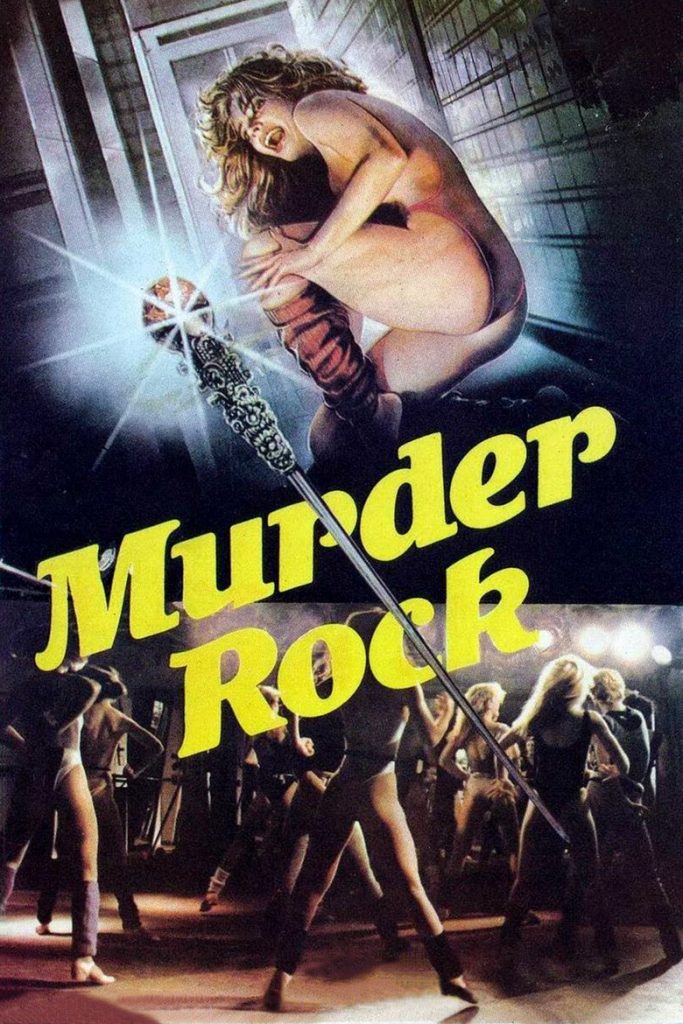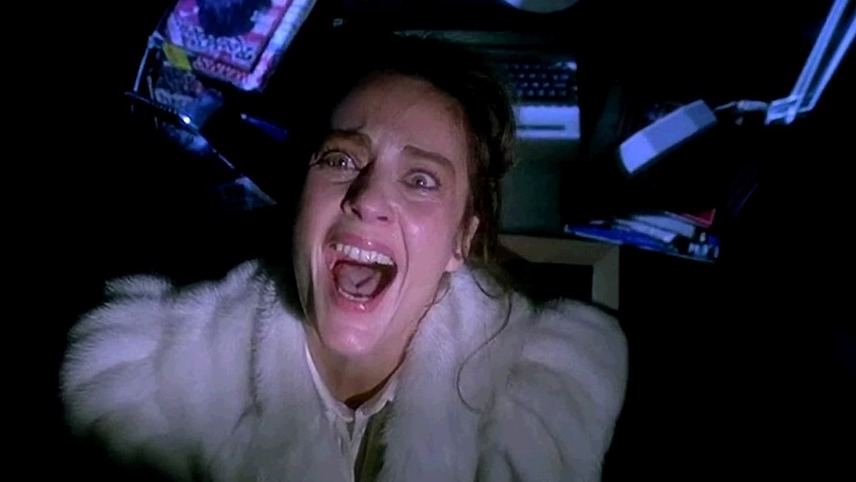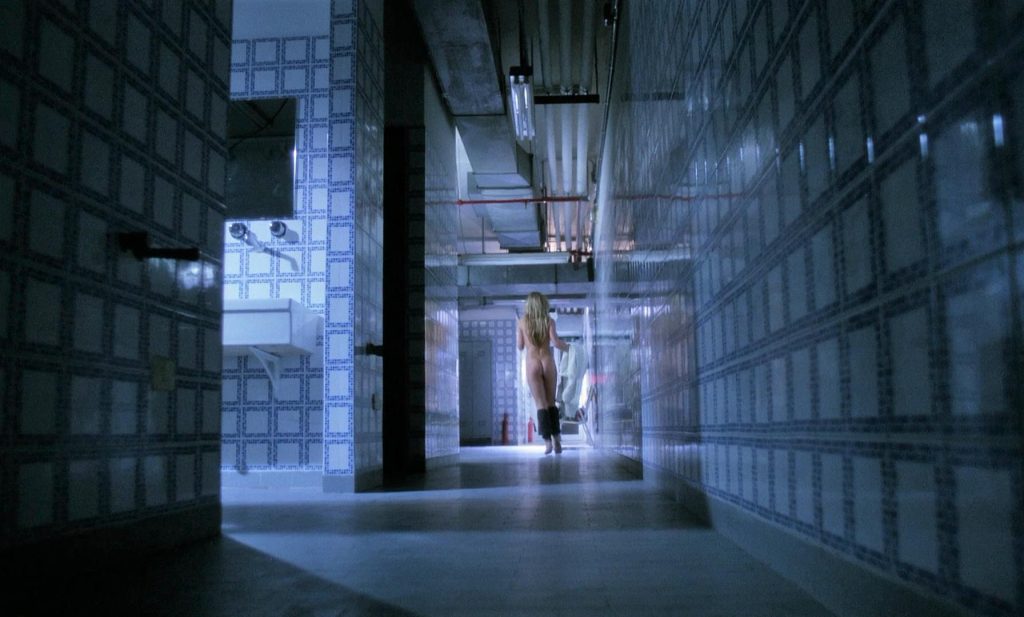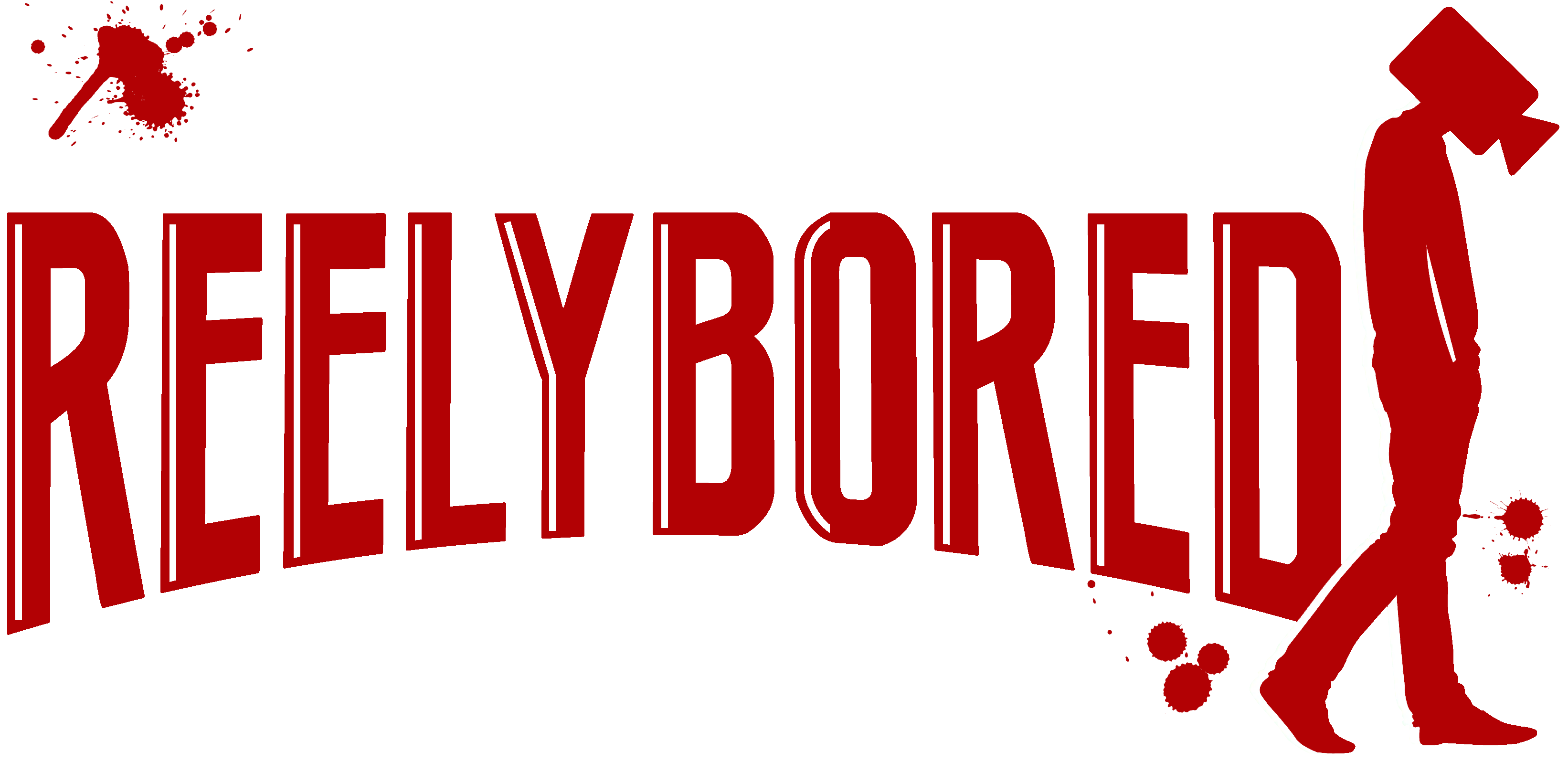
A series of murders rock a dance academy in New York in which the mysterious directress, Candice, sets out to find the killer, with a little assistance from a shady male model, named George, who has a hidden agenda for her as does she for him.
Giallo Movie Review – Murder Rock: Dancing Death
Murder Rock: Dancing Death kicks off in 1980s New York City, with the iconic Twin Towers looming over the skyline. As Keith Emerson’s rock ballad, “Murder Rock“, sets the scene, we’re treated to images of the city, interspersed with a group of kids dancing in a club. At this point, I found myself puzzled, trying to connect the dots between the giallo murder mystery I signed up for and a bunch of kids breakdancing to this mismatched soundtrack. The year was 1984, and it seemed like director Lucio Fulci wanted to tap into the street dance craze popularized by films like Breakin, Wild Style, and Beat Street, although an argument could be made that all these films were released around the same time. This opening sequence had little to no relevance to the story that followed, which centers around a prestigious ballet studio with dancers resembling those from the Olivia Newton-John music video for “Physical” or the 1983 hit, Flashdance. Murder Rock may even have been a bigger hit if it were called “Slashdance” to ride on the coattails of the aforementioned film.

After the breakdance sequence, we’re introduced to the characters at the Arts for the Living Center in NYC. Against the backdrop of another cringe-worthy yet catchy Keith Emerson tune, “Streets of Rage,” a mix of men and women audition and rehearse for talent agents. Only three dancers will be chosen, setting the stage for jealousy and resentment, and ultimately, a series of murders. Classic giallo, right? But fear not, the show must go on, even in the face of death, as the company soldiers on, seemingly undeterred by the grim events unfolding around them.

Murder Rock serves as a reminder that the giallo sub-genre was past its prime in the 1980s, past its prime of the 1970s, although it still clung to its signature elements: mysterious killers, POV shots, inventive murder methods, and a killer soundtrack. Although I may be used to the giallo of the 70s, there are some heavy-hitters beyond that stick out and left their mark on the genre such as Tenebrae, Opera, Trauma, The Stendhal Syndrome, A Blade in the Dark, Delirium, and Inferno to name a few. Notice a pattern? Well, most of these films are from the maestro, Dario Argento. Of course, I would be remiss if I did not mention Lucio Fulci’s renowned The New York Ripper which, compared to Murder Rock, is an absolute masterpiece in the gore and sleaze department.
While there’s no amateur sleuth trying to crack the case, the police and lead detective play pivotal roles in solving the murders in Murder Rock. It took me a while to warm up to this film due to the cringy yet infectious music, the dated film stock, the relentless flashing lights ( you will know what I mean when you see the movie), or just the overall ’80s vibe and cheesiness. There was a slight disconnect in that, at times, I could not figure out what the film wanted to be. But eventually, I let go of preconceived expectations and found myself immersed in the story. While Murder Rock may not rank among the best giallo films I’ve seen, it’s far from the worst. There’s a lot to appreciate, like the unpredictability of the killer’s identity and motives, which is a rarity in this genre.

Despite its flaws, I couldn’t help but enjoy it. Though I must admit, Fulci has delivered better work, and while I won’t be rushing to rewatch this anytime soon, I did find the soundtrack oddly compelling enough to snag a vinyl copy. Make of that what you will. In the end, I will give this film a recommendation, but be forewarned, other films out there will be worth your time.
